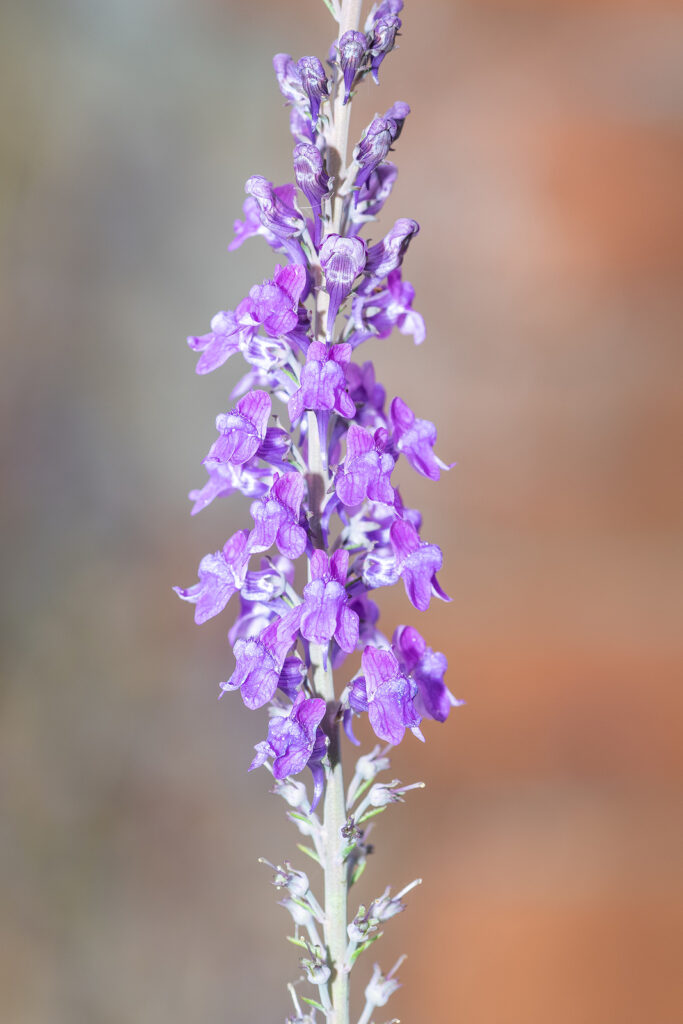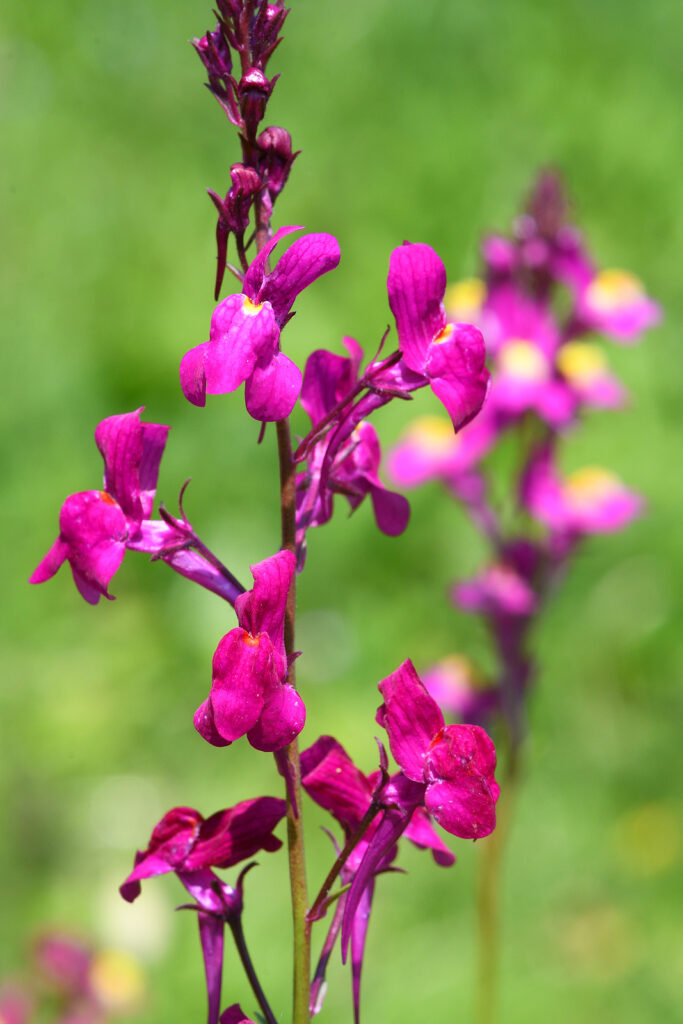Linaria–commonly called toadflax–bears trailing stems with a succession of snap-dragon-like, orange-centered purple-violet flowers in summer. Linaria can trail over walls and raised beds or spread over a gravel bed.
Linaria is a genus of rather low-growing annual, biennial, and perennial plants some trailing and some erect. The genus contains about 100 species. The flowers that come in a wide variety of pastel shades resemble miniature snapdragons (Antirrhinum).
The annuals are easily grown from seed which is generally sown indoors in early spring. The perennials are equally easy to grow. The usual method of propagation is division.
Good Products for Growing Beans at Amazon:
- Garden Safe Snail and Slug Bait
- Bonide Sulfur Fungicide
- Monterey BT Caterpillar Killer
- Neem Bliss 100-% Cold Pressed Neem Oil
- Safer Brand Insect Killing Soap
- PyGanic Botanical Insecticide
Interestingly, Linaria with its two-toned yellow flowers on erect plants is a common roadside weed throughout most of the world; an improved variety was developed and became an All-America selection–a choice garden annual.

Get to know Linaria
- Plant type: Annual and perennial cultivars
- Growing Zones and range: Zones 4 to 9
- Hardiness: Tender annuals; perennial Linaria purpurea is hardy to -20°F (-29°C).
- Height and width: 12 to 36 inches (30-91cm) tall; 9 to 12 inches (22-30cm) wide
- Foliage: Ovate, linear, or lance-shaped leaves and erect or trailing stems
- Flowers: Blooms that resemble miniature snapdragons are carried in erect racemes
- Flower colors: Shades of gold, yellow, orange, white, pink, blue, purple, and red
- Bloom time: Spring to fall
- Uses: Beds, borders, window boxes
- Common name: Toadflax, baby snapdragon, spurred snapdragon
- Botanical name: Linaria spp.
- Family: Scrophulariaceae
Where to plant Linaria
- Grow Linaria in full sun.
- Plant Linaria in light, sandy, well-drained soil.
- Linaria prefers a soil pH of 6.5 to 7.2.
Linaria uses and companions
- Use Linaria in an herbaceous border; alpine species can be used in rock gardens.
- Good garden companions for Linaria are Cosmos atrosanguineus, Nepeta, Oenothera, Sedum, Stachys lanata.

When to plant Linaria
- Sow annual Linaria seeds directly in the garden in early spring as soon as the soil is workable in Zones 4-7. In Zones 8-9, sow seeds of annual types in the fall for late-winter bloom.
- For an early start, sow seed indoors 6 to 8 weeks before the last frost date.
- For perennial types, set established plants in the garden in spring.
- In mild-winter regions, sow seeds in fall from winter to spring bloom.
Planting and spacing Linaria
- Sow seed 1/8 to 1/4 inch deep. Seeds are best started at 55° to 60°F (13°-15.6°C).
- Germination takes 14 days.
- Space Linaria 9 to 12 inches (22-30cm) apart.
How to water and feed Linaria
- Linaria needs moderate water; keep the soil evenly moist.
- Water plants during dry weather.
- Fertilize Linaria lightly with an all-purpose fertilizer.
Linaria care
- Mulch around toadflax to conserve soil moisture.
- Cut both annual and perennials back after the first flush of bloom to encourage new flowers.
- Linaria easily self-sows; you may want to control new plants.

Linaria pests and diseases
- Linaria is susceptible to attack by aphids and flea beetles.
- Downy mildew, white smut, and anthracnose can occur.
Linaria propagation
- Propagate Linaria by seed, cuttings, and division.
- Sow seeds in early spring; seeds germinate in 10 to 20 days at 65 to 70°F (18°-21°C).
- Propagate perennial Linaria by dividing plants in spring.
- Linaria can be propagated by taking cuttings of shoots that arise at the base of the plant in spring.
Linaria varieties to grow
- Linaria maroccana, baby snapdragon, Moroccan toadflax: Annual grows to 24 inches (61cm) tall; flower spur is longer than the flower; lower lip is usually marked by yellow or orange; blooms until summer heat hits.
- L. purpurea, purple toadflax: Perennial that blooms all summer in most climates; narrow bushy grow to 36 inches (91cm) tall; violet-blue flowers in summer.
- L. vulgaris, butter and eggs toadflax: Perennial with stiff, branches bears long, dense racemes of pale yellow flowers.
Linaria frequently asked questions
Q: What growing conditions does Linaria like?
A: Linaria prefers cool summers. If your summers are hot, grow Linaria in spring or fall. Plant Linaria in full sun or light shade in moist soil. Mulch to keep the soil moist and cool. Feed Linaria every other month during the growing season.
Q: Can I start Linaria seed directly in the garden?
A: You can sow Linaria seed in the garden in the fall for germination and bloom the following spring. You can sow in early spring as soon as the soil can be worked. Seeds are very small and can easily wash away in heavy rain. You can start seeds indoors four to six weeks before the last frost; indoors, start seeds in a cool room.
Related Articles:
- 20 Perennials That Bloom for 6 to 8 Weeks
- Shrubs with Showy Flowers Season-by-Season
- Trees in Garden Design
- Growing Annuals for Summer Bloom
- Trees—click here for more articles
- Shrubs—click here for more articles
- Perennials—click here to see more
- Annuals—click here to see more















